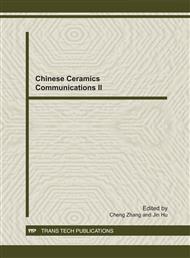p.415
p.422
p.427
p.432
p.436
p.441
p.445
p.449
p.453
Investigation on ABS Hydrophobic and Oleophobic Processes
Abstract:
Preparation of hydrophobic and oleophobic ABS laminates by a template method or additives added method and hydrophobic and oleophobic mechanism of ABS were investigated. ABS laminates with micro/nanopores were fabricated by adding additives and dissolving the micro/nanomaterial on surface for forming pores, and with low surface energy were prepared by adding nanometer titanium dioxide (TiO2) and silicon dioxide (SiO2). The contact angle of ABS laminates with oil and water were tested by the contact angle meter. Surface microstructure of the ABS laminates were observed by SEM. The results show that the contact angle of the Al-ABS laminates treated by diluted hydrochloric acid with water is 117° increase 67°than the contact angle of ABS laminates without any treatment, which was since aluminum particles on the surface of ABS laminates are dissolved by diluted hydrochloric acid and form rough surface morphology with the surface micro/nanostructure.
Info:
Periodical:
Pages:
436-440
Citation:
Online since:
November 2011
Authors:
Keywords:
Price:
Сopyright:
© 2012 Trans Tech Publications Ltd. All Rights Reserved
Share:
Citation:


